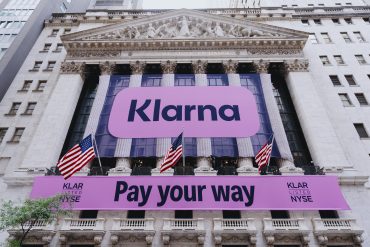
- Digital Assets
- Digital Banking
- Fintech
US Banks Move Into Crypto: Custody, Trading, Tokenization
6 minute read

Top US banks embrace cryptocurrency trading and custody services as institutional demand rises across Wall Street
Key Takeaways
- 13 of the top 25 U.S. banks are now offering or piloting cryptocurrency services, marking a significant shift from preliminary exploration to active deployment of digital asset products targeting affluent clients.
- Major banks form stablecoin consortium as JPMorgan Chase, Bank of America, Citigroup, and Wells Fargo explore creating a jointly-backed stablecoin through entities like Early Warning Services and The Clearing House.
- Morgan Stanley enables 15,000 brokers to recommend spot Bitcoin ETFs while Charles Schwab announces direct Bitcoin and Ethereum trading integration on its platform.
Introduction
The U.S. banking sector reaches a critical inflection point as over half of the nation’s 25 largest financial institutions embrace cryptocurrency services. This transformation signals the industry’s evolution from skeptical observer to active participant in digital asset markets.
Major banks are expanding beyond basic custody to offer sophisticated services including stablecoin development, asset tokenization, and direct trading platforms. The shift primarily targets institutional and high-net-worth clients seeking integrated crypto solutions within traditional banking relationships.
Key Developments
Recent analysis by River, a Bitcoin service provider, reveals 13 major banks have transitioned from preliminary stages to active crypto service deployment. Banks like Fifth Third and Citigroup remain in exploratory phases, while USAA has begun exchange integration for customer access.
Morgan Stanley leads broker-dealer integration by authorizing 15,000 financial advisors to recommend spot Bitcoin ETFs with established suitability guidelines and allocation limits. Charles Schwab’s CEO announces plans for direct Bitcoin and Ethereum trading capabilities integrated into the bank’s core platform.
PNC Bank partners with Coinbase to enable wealth management clients direct cryptocurrency trading from PNC accounts, eliminating the need for separate platforms. This integration represents a significant step toward seamless crypto-traditional finance convergence.
State Street prepares to launch proprietary stablecoins and tokenize customer deposits to enhance settlement efficiency. The bank’s roadmap includes tokenized bonds and money market fund shares as next-phase offerings.

Market Impact
The banking sector’s crypto adoption accelerates institutional acceptance and market legitimacy for digital assets. Major custodians BNY Mellon and State Street now store Bitcoin and Ethereum alongside traditional securities with institutional-grade security protocols.
JPMorgan’s June pilot of tokenized deposits on blockchain infrastructure demonstrates practical applications for instant settlement. The bank’s Base blockchain facilitates immediate dollar transfers, addressing traditional banking’s settlement delays.
BNY Mellon expands its custodial role by storing reserves for Ripple’s RLUSD stablecoin and various cryptocurrency ETF products. This development positions traditional custodians as critical infrastructure providers for emerging digital asset products.
Strategic Insights
Banks pursue a “regulated rails” strategy that leverages existing compliance frameworks and client trust rather than competing directly with retail crypto exchanges. This approach focuses on institutional clients who demand bank-grade risk management and regulatory oversight.
The proposed stablecoin consortium involving JPMorgan Chase, Bank of America, Citigroup, and Wells Fargo represents defensive positioning against potential competition from technology companies and major retailers. Banks recognize the strategic importance of controlling payment infrastructure in digital asset markets.
Tokenization initiatives extend beyond cryptocurrencies to traditional assets including stocks and bonds. Banking Exchange reports that this development enables real-time trading of fractional ownership, potentially transforming settlement processes across asset classes.
Citi explores blockchain technologies including Solana for tokenization pilots and plans custody service evaluation through early 2025. This timeline indicates measured institutional adoption focused on regulatory compliance and risk management.
Expert Opinions and Data
River’s analysis notes the familiar adoption pattern for disruptive technologies: “First they ignore it. Then they fight it. Now they’re starting to embrace Bitcoin.” This observation reflects the banking sector’s evolution from resistance to strategic integration.
Bank of America’s Global Research team projects that tokenization will become entrenched across financial and non-financial sectors over the next 15 years. However, analysts note that decentralized finance initiatives have underperformed expectations, emphasizing the need for regulatory clarity.
JPMorgan CEO Jamie Dimon acknowledges customer demand for unified asset views including cryptocurrency holdings. This client-driven approach influences the bank’s strategic decision to offer Bitcoin trading access integrated with existing platforms.
The Trump administration’s emphasis on regulatory clarity for digital assets supports banks’ strategic pivot toward crypto services. This policy direction encourages innovation in tokenization and custody services within established regulatory frameworks.
Conclusion
The banking sector’s crypto integration represents a fundamental shift from defensive positioning to strategic participation in digital asset markets. Nearly half of major U.S. banks now engage with Bitcoin and related services, indicating broad institutional acceptance.
Regulatory support combined with client demand creates favorable conditions for expanded crypto services across traditional banking channels. This convergence positions established financial institutions as central players in digital asset market development and mainstream adoption.








